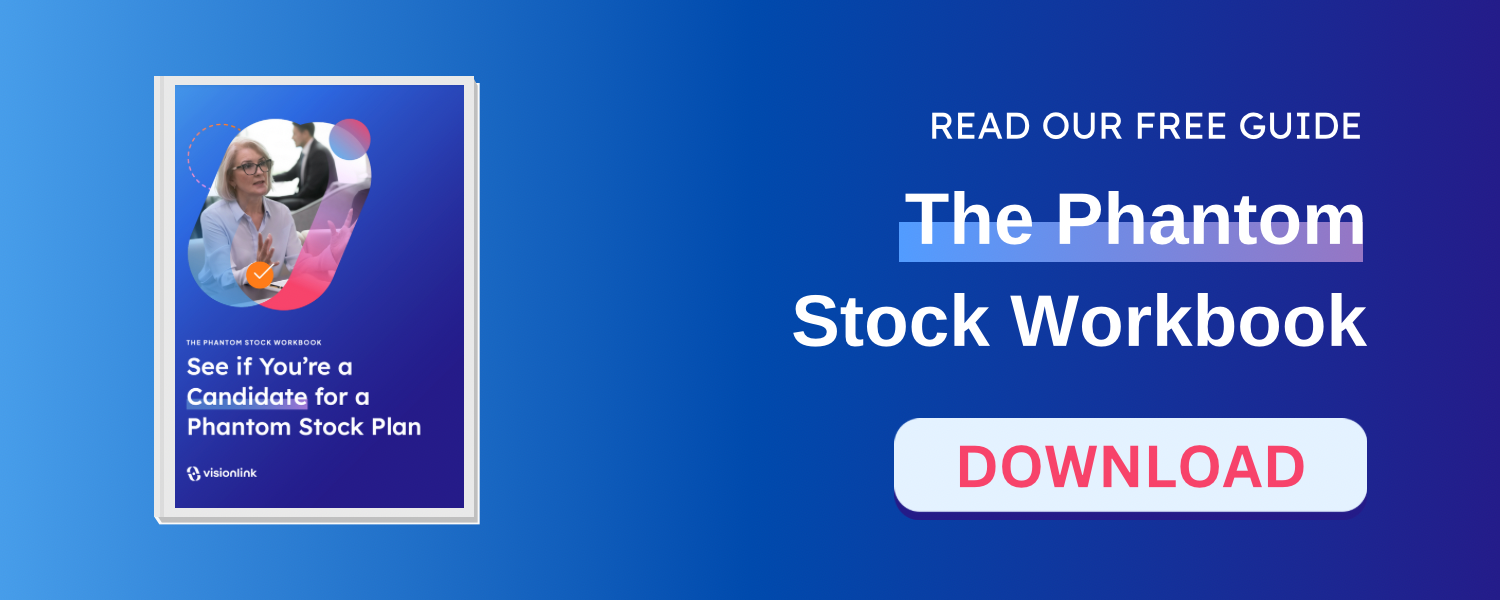
Phantom Stock has become the top choice of private company leaders for sharing long-term value with high-producing employees. Over the past 10 years, more and more have embraced its merits as the myths regarding these plans have been debunked. Phantom equity is an ideal substitute for sharing real stock with employees as it ties the value of a long-term award to the growth of the company without diluting owner equity. So, is 2019 the year you should implement such a plan in your company?
Well, let me slow down just a bit. It is not my intent to sell you on adopting a phantom stock plan for your business. It's not for everybody. Rather, what I hope to do is help you understand how to decide whether a plan might make sense for your organization. With talent wars raging, you cannot afford to have a pay offering that doesn’t include sharing value with those who create it. So, if you do not yet have a long-term incentive plan (LTIP), then you probably should be looking at phantom stock.
3 Key Questions
There are three questions that can help you determine whether this kind of plan makes sense for your business.
1. Do you have people in your organization that you are counting on to drive the growth of your business?
If so, you probably can’t afford to lose them. And in today’s environment, such individuals expect to share in the value they help create. They know their worth and have confidence in their ability to have an impact. They also know there are probably three or four other opportunities they could pursue if you are not responsive to their expectations.
As a result, you should anticipate that, sooner or later, these employees will be knocking on your door to have a conversation about this subject. It will likely include a request for stock. You will need to have thought the issue through, determined your philosophy about value-sharing and decided on a vehicle that will satisfy their request.
Phantom stock is ideal in this circumstance because it addresses the desire your people have to be rewarded for sustained performance while keeping your equity position in the business intact. And you can build a plan that gives you the flexibility of exchanging phantom shares for real stock in the future but without locking you into that obligation now.
2. Do you want to offer a long-term benefit to top producers without negatively impacting your current cash flow?
One of the nice things about phantom stock is that it creates no current cash obligation. Essentially, phantom equity is a deferred compensation plan where the benefit is tied to the value of the business. It’s a contractual promise to pay a benefit at a future date. As a result, you can issue shares to participants without a current hit to your cash flow statement—and without participating employees incurring any present income tax consequences.
Once the maturity period has been reached in a phantom stock plan, you must have enough cash to meet your payment obligation. At that time, the payments you make are considered cash compensation. As such, they are tax deductible to you and taxable to your employees. (Disclosure: I am not a CPA and VisionLink does not practice accounting. Check with your own tax advisor for the tax impact of a phantom stock plan on you or your organization.)
Because the plan doesn’t impact your company's current cash flow, phantom stock gives you great flexibility as your business wades through various economic cycles. For example, you may have a down year that prevents you from paying out bonuses. During such a period, you can issue more shares of phantom stock to offset the missed bonus payment. And you can do so knowing it creates no current cash obligation on your part.
3. Do you anticipate a top recruit creating significant value for your business, but don’t want to obligate the company to a long-term incentive payment until he or she has actually performed?
If you were a public company in this situation, you would likely give that person stock options. That would allow you to offer an incentive for performance that doesn’t pay off unless the recipient (and the company) actually gets results. In a public environment, this kind of offering usually includes a mechanism for helping employees buy the stock when they are ready to exercise their options.
Because this is more complicated in a private company, a phantom stock option plan becomes an ideal solution. It mirrors a regular stock option in many ways but without the mess associated with actually having to purchase the stock to realize the benefit. In a phantom stock option plan, participating employees receive phantom shares just as they would in a regular phantom equity plan. However, instead being paid the full value of the shares at the maturity date, they are paid the difference between the original share price and its value at the time of payout. So, if a share were valued at $100 at the time it is given, but grows to $350 at the payout date eight years later, the employee distribution is $250 per share (the difference between the current value and the original value).
This provides a triple incentive: 1) Employees want to perform so they can earn more shares; 2) Employees want to perform so the phantom share value increases, and; 3) Employees want to remain at the company past the vesting date so they remain eligible for a payout.
We are in the heart of the incentive planning season. As a result, now is the time to consider whether a phantom stock plan makes sense for your organization in 2019. Consequently, you should give some thought to the impact it can have on your ability to attract and retain premier talent next year—and drive those people to higher levels of performance.
Ready to Get Started?
When it comes to building a compensation strategy, you can trust that VisionLink knows what works and what doesn’t. We are ready to share that knowledge with you.
Stay Connected
Receive free, ongoing access to updates on compensation and talent trends, reports, events, and more.


